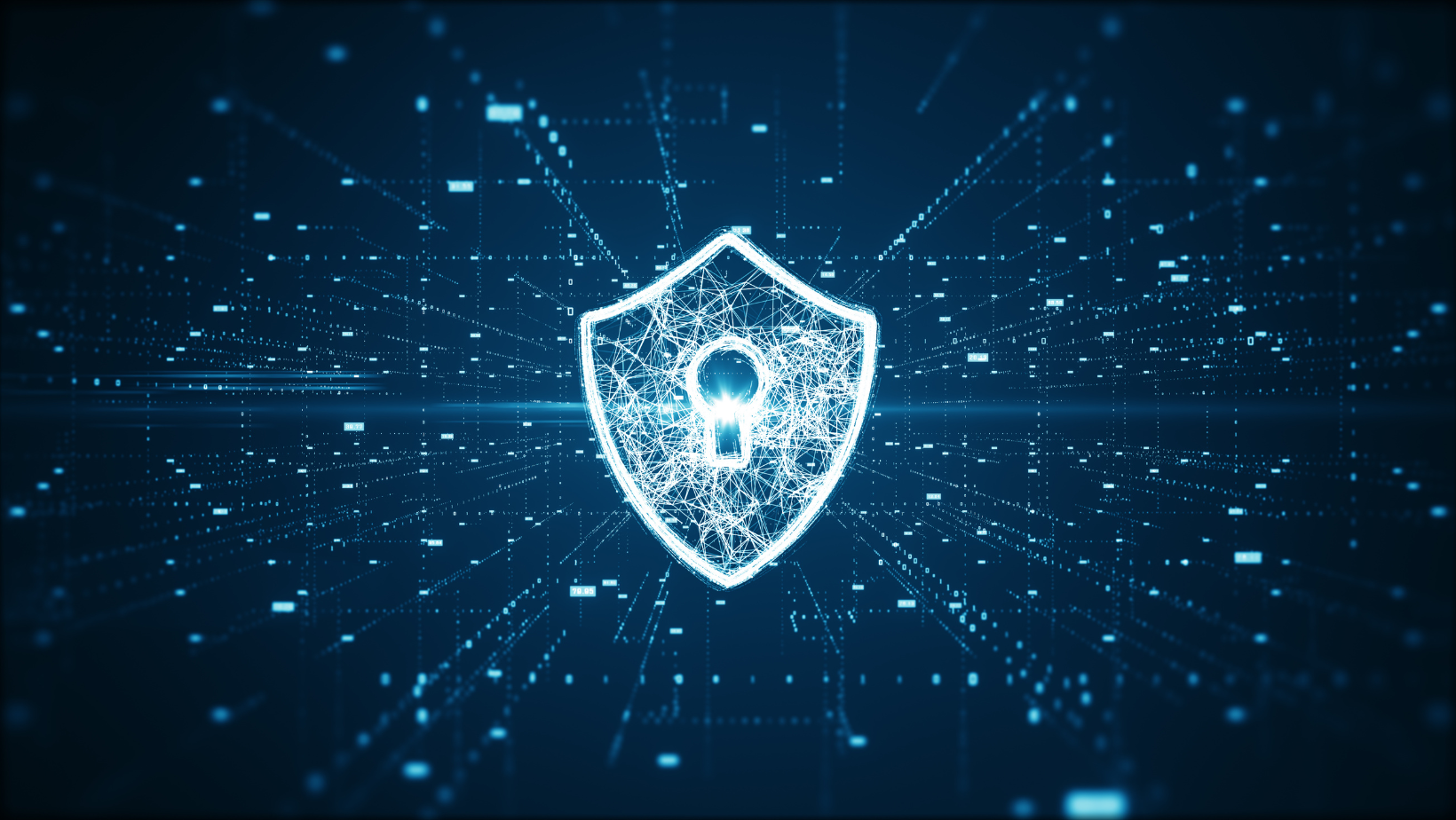What Is the Future of Cyber Security

As technology continues to advance rapidly, the world is becoming increasingly interconnected. With this interconnectivity comes advancements in communication and unprecedented access to information. However, with these benefits come numerous risks, particularly in cyber security. As we rely more and more on technology for all aspects of our lives, from personal communication to financial transactions, it has become imperative that we understand and address the potential threats posed by cyber-attacks.
In this article, we will explore the future of cyber security and how it is evolving to meet the ever-changing landscape of technology. We will delve into some of the major developments in this field, as well as potential challenges and solutions. Keep reading to learn more!
Current State of Cyber Security and Challenges
In the past decade, cyber security has become a critical topic in both the public and private sectors. With sensitive data breaches and cyber-attacks on major corporations, governments, and individuals becoming more prevalent, it is clear that no one is immune to these threats. In fact, according to a report by Cybersecurity Ventures, global cybercrime damages are expected to reach $6 trillion annually by 2021. Here are current trends and challenges in the field of cyber security:
Ransomware Attacks Are on the Rise

Ransomware attacks have emerged as one of the gravest threats in the realm of cyber security. This malicious tactic involves hackers infiltrating systems and encrypting critical data, effectively holding it hostage until a ransom is paid. The frequency and severity of these attacks have seen an alarming increase in recent years. A prominent example is the WannaCry ransomware, which infected over 300,000 computers in more than 150 countries, incurring damages worth millions of dollars. The impact of these attacks transcends financial burdens, as they compromise sensitive information and erode trust in technology and digital systems.
What makes ransomware attacks even more treacherous is their constant evolution. Hackers persistently seek new ways to circumvent security measures, rendering organizations vulnerable in their attempts to protect themselves. As technology continues to advance, it is expected that ransomware attacks will correspondingly grow more sophisticated and widespread in the future.
The Growing Threat of IoT Vulnerabilities
Another major concern for cyber security experts is the growing number of Internet of Things (IoT) devices used in homes and businesses. These devices, such as smart home systems, connected appliances, and wearable technology, are vulnerable to cyber-attacks if not properly secured. A study by HP found that 70% of IoT devices were vulnerable to attack.
This poses significant cybersecurity threats as more and more devices become connected through the internet, creating a larger attack surface for hackers to exploit. With the increasing use of IoT devices in critical infrastructure, such as healthcare and transportation, the consequences of a successful attack could be catastrophic. As the number of these devices continues to grow, their security must be prioritized to mitigate potential risks.
The Rise of State-Sponsored Cyber Attacks
Gone are the days when cyber-attacks were solely carried out by individual hackers looking for notoriety or financial gain. Today, state-sponsored attacks have become a significant concern in cyber security. Governments orchestrate these attacks with malicious intent towards other countries or organizations.
Such attacks can cause widespread damage and disruption on a large scale, as seen in the 2017 NotPetya attack, which targeted Ukraine’s energy sector but ended up affecting companies worldwide, causing billions of dollars in damages. With the advancement of technology and the increasing use of cyber warfare tactics, it is expected that state-sponsored cyber attacks will continue to be a major threat in the future.
Lack of Skilled Professionals
The shortage of skilled professionals in the field of cyber security is a crucial challenge that needs to be addressed in order to ensure a safer digital world. With the rapid growth of the global cybersecurity workforce, there is an ever-increasing demand for skilled professionals to protect against cyber threats and attacks. However, according to a report by Cybersecurity Ventures, there will be 3.5 million unfilled cybersecurity jobs globally by 2021.
This lack of skilled cybersecurity professionals leaves organizations vulnerable as they struggle to find qualified individuals to manage their intrusion detection systems. It also means that those working in the industry are often overwhelmed with responsibilities, increasing the risk of human error. Addressing this issue will require a collaborative effort from governments, organizations, and educational institutions to train and attract more individuals into the field.
Growing Cyber Crime Economy
The cybercrime economy is a rapidly growing problem that poses a significant threat to the future of cyber security. Hackers and cybercriminals are becoming more organized, sophisticated, and profitable in their attacks, creating a booming underground market for stolen data and information. For example, in 2019, hackers stole over 5 million credit card records from US-based companies and sold them on the dark web for approximately $40 each.
This shows the lucrative nature of cyber risks and the need for increased preventive measures to protect against these criminal activities. As technology continues to advance, we can expect this trend to continue, making it crucial for organizations to invest in robust security measures and stay updated on the latest threats to prevent becoming victims of this growing economy.
Cloud Security Risks
As more organizations move their data and operations to the cloud, security risks also increase. The shared nature of the cloud means that a single vulnerability can affect multiple clients, making it an attractive target for cybercriminals. Additionally, inadequate security measures from cloud service providers can leave organizations exposed to attacks.
To mitigate these risks, businesses must carefully choose their cloud service providers and ensure they have proper cybersecurity strategies. They must also regularly assess and update their security measures to protect against threats.
Insider Threats
While external cyber attacks often receive more attention, insider threats are just as dangerous and challenging to detect. These individuals have authorized access to an organization’s systems or information but use that access maliciously for personal gain or revenge.
Insider threats can cause significant damage, both financially and in terms of reputation. To combat this issue, organizations must have strict access controls and continuously monitor their systems for suspicious activities.
Artificial Intelligence (AI) Security
Artificial Intelligence (AI) has become a buzzword in the technology world, with its ability to automate processes and improve efficiency. However, as AI continues to evolve and expand its capabilities, it also presents significant challenges for cyber security. One of the main concerns is that hackers can use AI technology to launch more sophisticated attacks that are harder to detect and prevent.
AI-powered phishing attacks can gather personal information from social media platforms and create highly personalized and convincing emails, making it easier for individuals to fall victim. To counter this threat, organizations must invest in advanced AI-based security measures to keep up with potential attackers. This includes using machine learning algorithms to analyze patterns of behavior on their networks and proactively identify any suspicious activities before they turn into full-blown attacks. The future of cyber security heavily relies on our ability to use AI technology to improve our defense mechanisms and stay ahead of malicious actors.
The Future of Cyber Security

Given these current trends and challenges, the future of the cybersecurity industry may seem daunting. However, there are significant developments and advancements being made to address these issues and ensure a safer digital world for all. Here are some key trends that we can expect to see in the future:
Artificial Intelligence (AI) in Cyber Security
As technology continues to advance, so do the methods employed by cyber attackers. Traditional security measures are inadequate in defending against these ever-changing threats. This is where artificial intelligence (AI) emerges as a potent tool in the realm of cyber security. By leveraging AI systems, vast amounts of data can be analyzed and elusive patterns can be identified, augmenting threat detection and prevention to new heights.
IBM’s Watson for Cyber Security serves as a prime example of such an AI system. Through the utilization of ingenious machine learning techniques, security data is comprehensively analyzed, enabling the identification of potential threats that frequently elude human analysts. With the rapid expansion of Internet of Things (IoT) devices and interconnected systems, AI assumes a pivotal role in safeguarding these vulnerable technologies.
Biometrics for Enhanced Security
With the rise of cyber-attacks, traditional passwords and authentication methods have proven inadequate in protecting sensitive information. Biometric technology, such as fingerprint scanning and facial recognition, is becoming increasingly popular in enhancing security measures. These biometric identifiers are unique to each individual and are much more difficult for hackers to replicate than a password.
Not only are they more secure, but biometrics also provide a more convenient user experience by eliminating the need for multiple passwords. In addition, advancements in AI have made it possible to use behavioral biometrics, which analyzes how a person interacts with their device and can detect unusual behavior that may indicate an attempted hack.
Quantum Computing for Stronger Encryption
As encryption is crucial in keeping data safe from cybersecurity risks, cloud computing may be the future of secure communication. Unlike traditional computers that use binary bits (0s and 1s), quantum computers use qubits, which can exist as 0s and 1s simultaneously. This enables them to process data at an exponentially faster rate than classical computers.
With this speed, quantum computers can easily break existing encryption methods, making them a significant threat to cyber security. However, researchers are also exploring how quantum technology can create unbreakable encryption methods that will provide stronger protection against attacks.
The Need for Cyber Security Education and Awareness
Aside from technological developments, education and awareness are crucial in mitigating cyber security risks. Many data breaches occur due to human error, such as falling for phishing scams or using weak passwords. By educating individuals on how to recognize and prevent these attacks, the overall security of digital systems can be improved.
With the increasing number of cyber threats in today’s world, everyone needs to understand the importance of cyber security and take responsibility for their safety online. This includes organizations implementing proper training programs for their employees to ensure they have the knowledge and skills to protect sensitive information. Governments should also prioritize cyber security education in their policies to create a more secure digital environment for citizens.
Factors to Consider Moving Forward

As we continue to navigate the ever-changing landscape of technology and cyber threats, there are a few crucial factors to consider. These include ten of the following:
Collaboration Between Industries
Collaboration between industries is an essential aspect of addressing the future of cyber security. With the increasing interconnectedness of our global economy, it has become crucial for different industries to work together to protect against cyber attacks. A prime example of successful collaboration is the financial sector’s partnership with law enforcement agencies to combat financial fraud and cybercrime.
In 2018, a group of banks and law enforcement agencies worked together to take down a notorious cybercriminal organization that had stolen over $100 million from banks worldwide. This collaboration allowed for the pooling of resources and information, leading to the arrest and prosecution of those responsible for the attacks.
Education and Training
Education and training are crucial factors in addressing the future of cyber security. With the ever-evolving landscape of technology, individuals and organizations need to stay updated on the latest threats and preventive measures. This requires continuous education and training programs that cover topics such as identifying social engineering tactics, implementing proper security protocols, and responding to cyber-attacks effectively.
One example is the Cybersecurity Talent Initiative launched by the US Government in 2019. This program offers student loan assistance to individuals pursuing cybersecurity careers in exchange for working in a federal agency for a minimum of two years. By investing in education and training, we can ensure a skilled workforce that can keep up with the constantly evolving cyber threat landscape. Additionally, educating individuals about basic cybersecurity practices can help prevent attacks, as employees are often the weakest link in an organization’s security.
Government Involvement and Regulation
Government involvement and regulation play a vital role in addressing the future of cyber security. Governments must work with industry leaders to establish regulations and policies that hold organizations accountable for their cybersecurity measures. This includes enacting laws that require companies to implement proper security protocols and regularly update them to protect against emerging threats.
An example of government involvement is the European Union’s General Data Protection Regulation (GDPR), which sets strict guidelines for how companies handle personal data and imposes significant fines for non-compliance. Such regulations not only ensure better protection for individuals’ data but also encourage businesses to take cybersecurity seriously.
Technological Advancements
Technological advancements, both in terms of cyber defenses and threats, will continue to shape the future of cybersecurity. With emerging technologies such as AI, blockchain, and quantum computing, there is a constant race between defenders and attackers to stay ahead.
On the one hand, these technologies can provide more robust security measures through methods like behavioral biometrics and unbreakable encryption. On the other hand, they also pose new challenges as cybercriminals find ways to exploit them for their gain. Therefore, it is crucial to invest in research and development and stay updated on emerging technologies to ensure effective defense against evolving threats.
Conclusion
As technology continues to advance and cyber criminals become more sophisticated, cybersecurity remains a pressing concern for the future. To safeguard against potential attacks, organizations must proactively invest in advanced security measures, including AI-based technologies. Collaboration across industries, ongoing education and training, and government involvement all play vital roles in addressing the ever-evolving landscape of cybersecurity.
While we cannot predict the exact trajectory of cybersecurity, one thing is certain: it demands unwavering vigilance, adaptability, and collaboration to stay one step ahead of threats. Although the future may appear uncertain, implementing the right strategies ensures a safer digital world for everyone. As the adage goes, “An ounce of prevention is worth a pound of cure,” and this rings particularly true in the realm of cybersecurity. Let us join forces in constructing a secure future for all.

